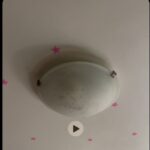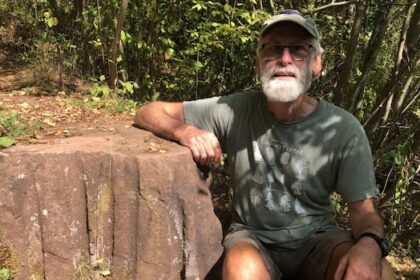Members of the public are able to take and submit photos of plants, animals, insects and birds they find in their backyards and neighbourhoods until Monday as part of the annual bioblitz citizen nature survey. Photo by Brent Calver /SubmittedArticle contentThere are still a couple of days left for Nova Scotians to get out their phones and take pictures of nature around them in the annual Canada’s Big Backyard BioBlitz.THIS CONTENT IS RESERVED FOR SUBSCRIBERS ONLY.Subscribe now to access this story and more:Unlimited access to the website and appExclusive access to premium content, newsletters and podcastsFull access to the e-Edition app, an electronic replica of the print edition that you can share, download and comment onEnjoy insights and behind-the-scenes analysis from our award-winning journalistsSupport local journalists and the next generation of journalistsSUBSCRIBE TO UNLOCK MORE ARTICLES.Subscribe or sign in to your account to continue your reading experience.Unlimited access to the website and appExclusive access to premium content, newsletters and podcastsFull access to the e-Edition app, an electronic replica of the print edition that you can share, download and comment onEnjoy insights and behind-the-scenes analysis from our award-winning journalistsSupport local journalists and the next generation of journalistsRegister to unlock more articles.Create an account or sign in to continue your reading experience.Access additional stories every monthShare your thoughts and join the conversation in our commenting communityGet email updates from your favourite authorsSign In or Create an AccountorArticle contentIn its fifth year and organized by Nature Conservancy of Canada, it started July 28 and is running to Monday.Article contentArticle contentThe event looks for people to take photos of plants, animals, birds and insects either in their yard or when they’re out and about.Article contentArticle contentLast year 5,200 photos were submitted from Nova Scotia. The Nature Conservancy and other organizations use the information to look at the migration of species and where further conservation needs to take place – or where invasive species are popping up and need to be managed.Article contentThe event uses the iNaturalist app, which will automatically help people of any age identify the photos being uploaded.Article contentThe backyardbioblitz.ca website also has learning activities for younger naturalists.Article contentContributions are important says Mark Frank, the conservancy’s development officer in Atlantic Canada, because they provides an understanding of biodiversity, helps detect invasive species, and tracks changes over time as climate change continues to cause problems across the country.Article contentOver the past four years there have been more that 190,000 submissions with 8,600 species, including many that are rare, at-risk or endangered.Article contentArticle contentFrank said monarch butterflies, which are a species at risk, were the most observed through the first four days this year.Article content Members of the public are able to take and submit photos of plants, animals, insects and birds they find in their backyards and neighbourhoods until Monday as part of the annual bioblitz citizen nature survey. Photo by Dennis Minty /ContributedArticle content“That’s a good sign that so many people are seeing them so far,” he said.Article contentIn the past, black ash, bank swallows and piping plovers are some of the rarer things recorded, and sometimes there are species that are found outside their range.Article contentBirds are one of the most uploaded photos to the app.Article contentFrank said there are people who spend a lot of time in nature who submit photos, but the contributions of everyday people, including children, are important.Article content“It’s a really great opportunity to look for something different if you’re an experienced naturalist, or if you’re new to getting out it’s just amazing now many things you’ll see,” he said.Article contentHe said as an example, he was looking for caterpillars on the milkweed in his backyard that will become monarchs, “and I couldn’t believe how many pollinators were also using the milkweed; I found six different species in just a couple minutes of observation. It’s really amazing what happens when you take the time to slow down and look.”Article content
Public asked to help nature study with photos through annual bioblitz











